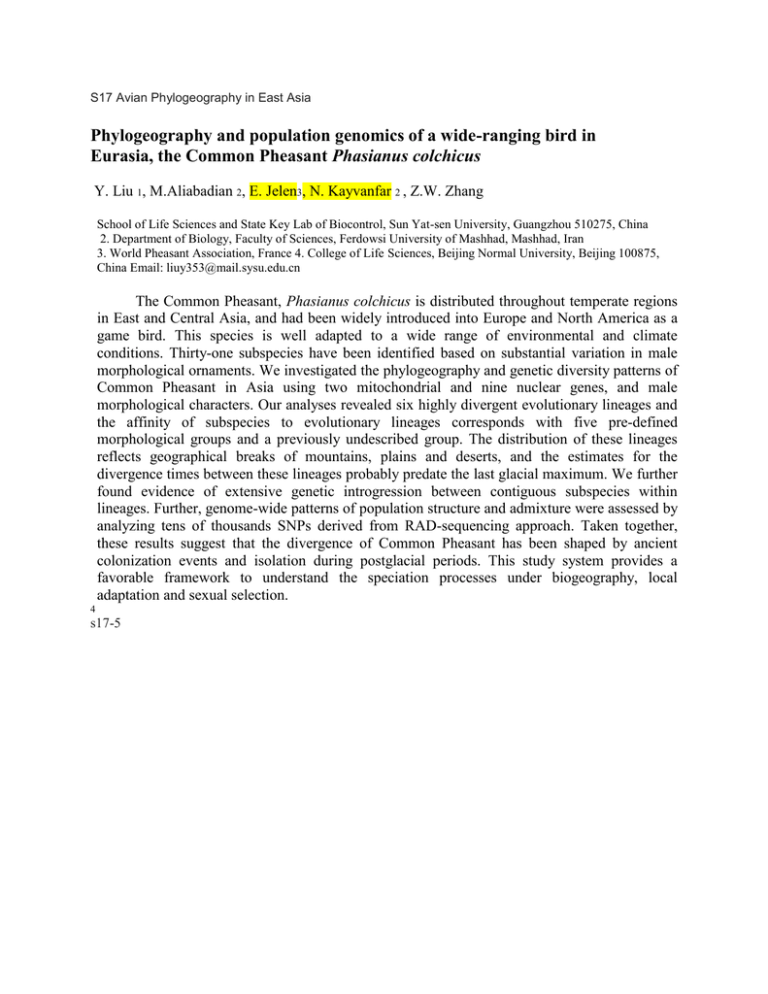Phylogeography and population genomics of a wide-ranging bird in Phasianus colchicus
advertisement

S17 Avian Phylogeography in East Asia Phylogeography and population genomics of a wide-ranging bird in Eurasia, the Common Pheasant Phasianus colchicus Y. Liu 1, M.Aliabadian 2, E. Jelen3, N. Kayvanfar 2 , Z.W. Zhang School of Life Sciences and State Key Lab of Biocontrol, Sun Yat-sen University, Guangzhou 510275, China 2. Department of Biology, Faculty of Sciences, Ferdowsi University of Mashhad, Mashhad, Iran 3. World Pheasant Association, France 4. College of Life Sciences, Beijing Normal University, Beijing 100875, China Email: liuy353@mail.sysu.edu.cn The Common Pheasant, Phasianus colchicus is distributed throughout temperate regions in East and Central Asia, and had been widely introduced into Europe and North America as a game bird. This species is well adapted to a wide range of environmental and climate conditions. Thirty-one subspecies have been identified based on substantial variation in male morphological ornaments. We investigated the phylogeography and genetic diversity patterns of Common Pheasant in Asia using two mitochondrial and nine nuclear genes, and male morphological characters. Our analyses revealed six highly divergent evolutionary lineages and the affinity of subspecies to evolutionary lineages corresponds with five pre-defined morphological groups and a previously undescribed group. The distribution of these lineages reflects geographical breaks of mountains, plains and deserts, and the estimates for the divergence times between these lineages probably predate the last glacial maximum. We further found evidence of extensive genetic introgression between contiguous subspecies within lineages. Further, genome-wide patterns of population structure and admixture were assessed by analyzing tens of thousands SNPs derived from RAD-sequencing approach. Taken together, these results suggest that the divergence of Common Pheasant has been shaped by ancient colonization events and isolation during postglacial periods. This study system provides a favorable framework to understand the speciation processes under biogeography, local adaptation and sexual selection. 4 s17-5







